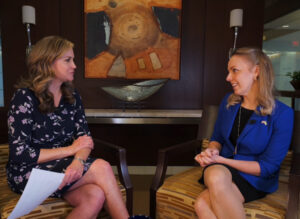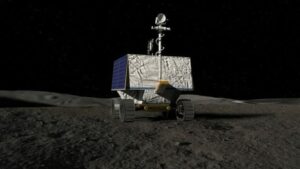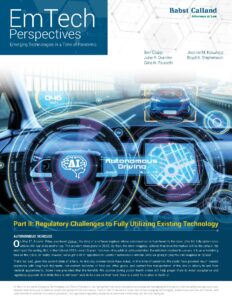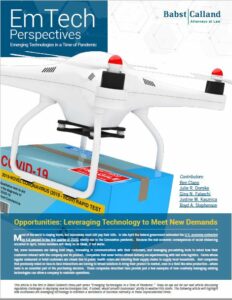 Attorney Justine Kasznica would be the first to admit that she moved to Pittsburgh to take a chance on an apparent regional business renaissance driven by a promising technology sector. Over time, the region hasn’t disappointed.
Attorney Justine Kasznica would be the first to admit that she moved to Pittsburgh to take a chance on an apparent regional business renaissance driven by a promising technology sector. Over time, the region hasn’t disappointed.
“It’s an incredibly exciting time to be in this region and to be an attorney working with emerging technologies,” said Kasznica, who quickly would find her way into the center of Pittsburgh’s technology universe and help drive significant industry growth as part of a flourishing entrepreneurial ecosystem here.
“We are absolutely capturing a moment in history in this tri-state region,” she said. “To be able to experience the outputs of the efforts of the technologists across the region and to be part of the investor and adviser teams who are helping them grow is as rewarding as it is exciting.”
Today, Kasznica serves as a shareholder of Babst Calland, leading the firm’s emerging technologies group and serving on the front lines of a local industry sector that has gained global recognition while also facing its share of business and legal challenges. Babst Calland is one of the Pittsburgh region’s largest law firms…
To view the full article and video interview, click here.
To view the PDF, click here.

An artist’s rendering of NASA’s VIPER rover, which will roam the Moon’s south pole looking for water ice.
(Source: NASA)
Today, we are thrilled to celebrate with Astrobotic Technology, Inc., a Pittsburgh-based space robotics and lunar transportation and logistics company, on receiving a $199.5 NASA award to send the NASA Volatiles Investigating Polar Exploration Rover (VIPER) to the lunar surface in 2023 to search for water-ice. Not only is this a historically significant mission, as it is the first “resource-mapping” mission of its kind, this is an amazing achievement for a company that that has worked tirelessly for 13 years to prove a new commercial space market. For more information, click here.
Our Emerging Technologies attorneys are fortunate to work with incredible innovators, entrepreneurs and visionaries pushing the frontiers of technology and industry. We love to showcase our clients, especially when they hit notable milestones that may be of interest to our entire Babst Calland EmTech family.
Our newly launched EmTech Blog will enable us to do more of these Client Spotlights, so stay tuned! If you would like your company to be featured, please send accomplishments or highlights to jkasznica@babstcalland.com.
 Regulatory Challenges to Fully Utilizing Existing Technology
Regulatory Challenges to Fully Utilizing Existing Technology
On May 1st, Amazon Prime premiered Upload, the story of a software engineer whose consciousness is transferred to the cloud after his fully autonomous vehicle (AV) rear-ends another car. The accident takes place in 2033. By then, the show imagines, vehicles that drive themselves will be the default. We won’t spoil the ending. But, in the fictional 2033 only 13 years from now—the public is astounded when the vehicle is involved in a wreck. It is an entertaining take on the future. In reality, however, we’ve got a lot of regulations to update if autonomous vehicles (AVs) are going to play the role imagined in Upload.
Read More.
Tags: Autonomous Vehicles,
Coronavirus,
COVID-19,
Drones,
Efficiency,
Emerging Technology,
Industry News,
Innovation,
Mobility,
Pandemic,
Robotics,
Tech Industry,
Technology,
Transportation

Opportunities: Leveraging Technology to Meet New Demands
Most of the world is staying home, but businesses must still pay their bills. In late April the federal government estimated the U.S. economy contracted by 4.8 percent in the first quarter of 2020, mostly due to the Coronavirus pandemic. Because the real economic consequences of social distancing occurred in April, future numbers will likely be as bleak, if not worse.
Yet, some businesses are taking bold steps, innovating in communications with their customers, and leveraging pre-existing tools to retool how their customers interact with the company and its product. Companies that never before offered delivery are experimenting with last mile logistics. Farms whose regular restaurant or hotel customers are closed due to public health orders are retooling their supply chains to supply local households. And companies that previously relied on face-to-face interactions are turning to virtual solutions to bring their product to market, even in a field like wine production—where taste is an essential part of the purchasing decision. These companies described here provide just a few examples of how creatively leveraging existing technologies can allow a company to maintain operations.
Read More.
Tags: Commercial,
Coronavirus,
Corporate Law,
COVID-19,
Drones,
Efficiency,
Emerging,
Emerging Technology,
Industry News,
Innovation,
Last Mile Logistics,
Logistics,
Mobility,
Pandemic,
Regulations,
Regulatory,
Remote Learning,
Robotics,
Robots,
Supply Chain,
Tech Industry,
Technology,
Transportation,
US DOT
 Attorney Justine Kasznica would be the first to admit that she moved to Pittsburgh to take a chance on an apparent regional business renaissance driven by a promising technology sector. Over time, the region hasn’t disappointed.
Attorney Justine Kasznica would be the first to admit that she moved to Pittsburgh to take a chance on an apparent regional business renaissance driven by a promising technology sector. Over time, the region hasn’t disappointed.

